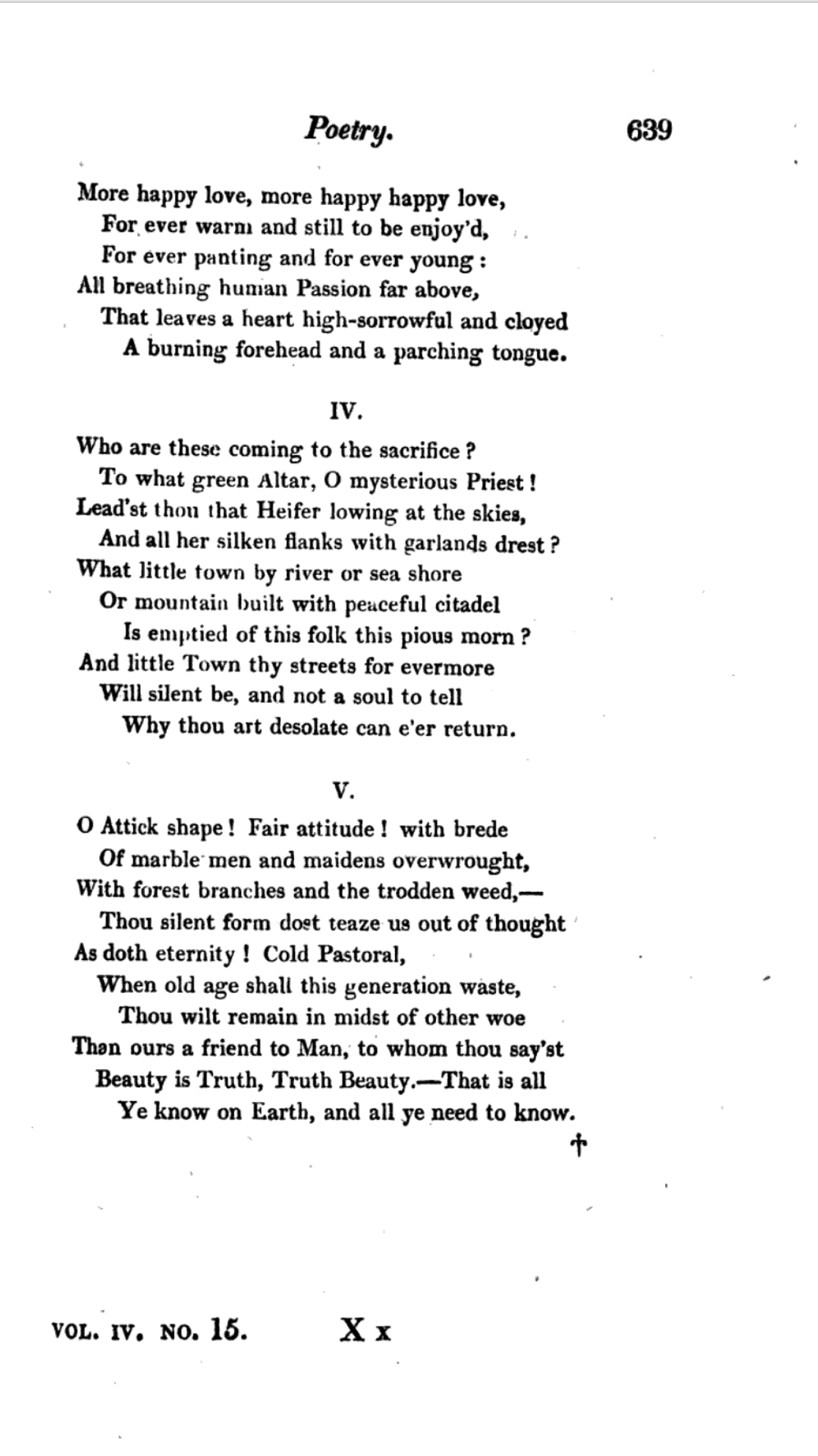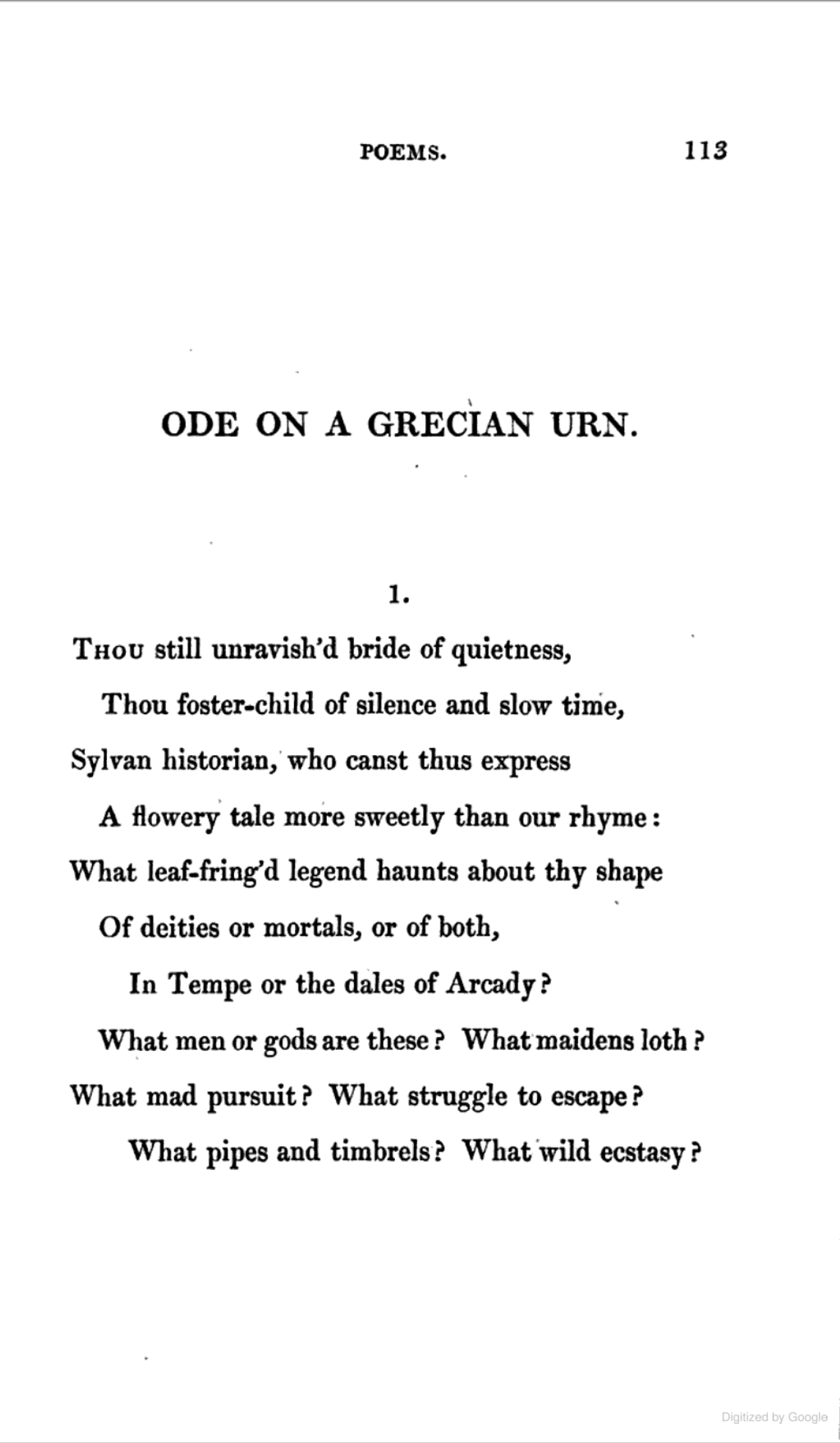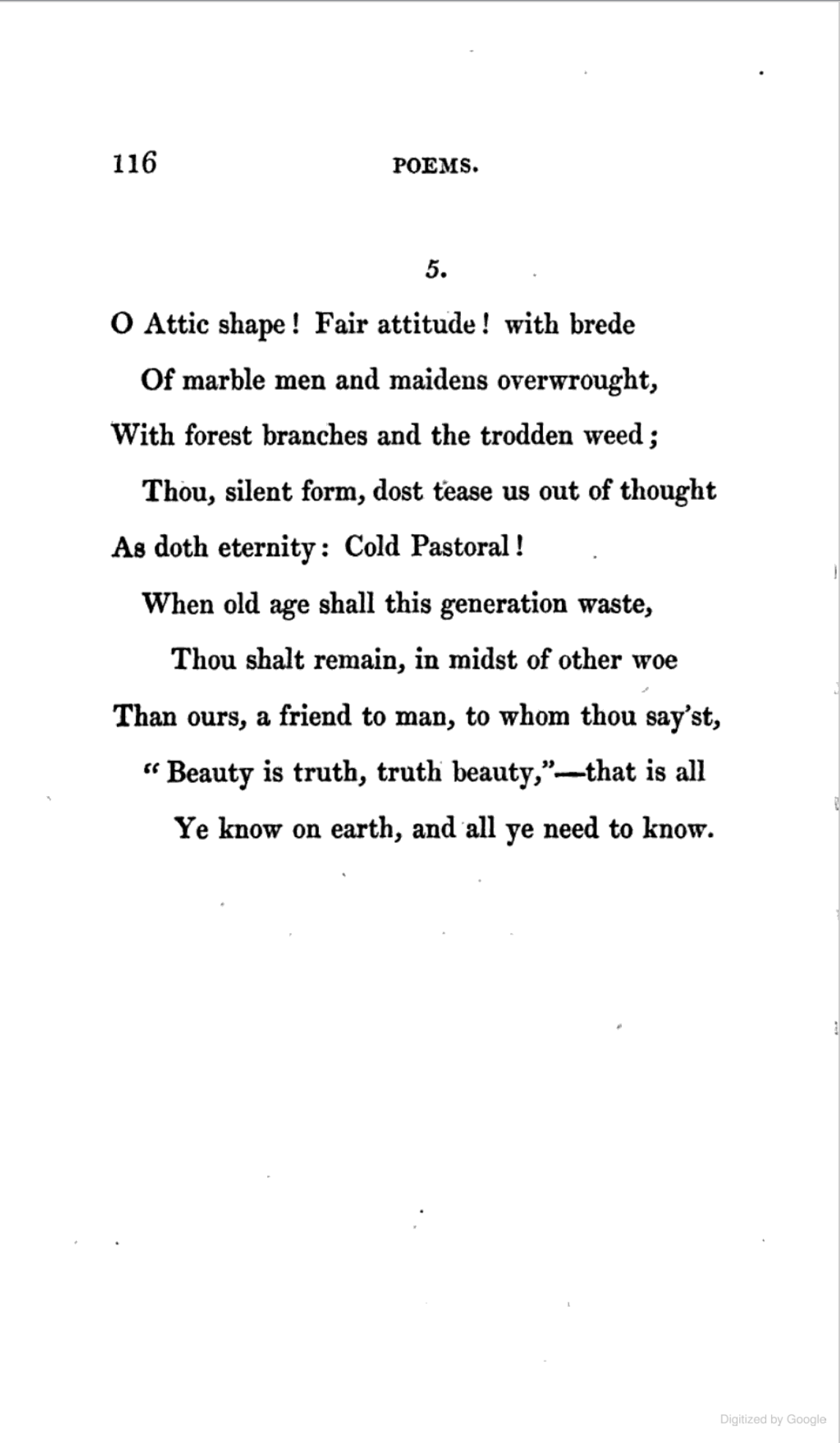"Ode on a Grecian Urn"
By
John Keats
Transcription, correction, editorial commentary, and markup by Students and Staff of the University of Virginia
113
Ode on a Grecian Urn
1.
1Thou still unravish'd bride of quietness,
2Thou foster-child of silence and slow time,
3Sylvan historian, who canst thus express
4A flowery tale more sweetly than our rhyme:
5What leaf-fring'd legend haunts about thy shape
6Of deities or mortals, or of both,
7In Tempe or the dales of Arcady?
8What men or gods are these? What maidens loth?
9What mad pursuit? What struggle to escape?
10What pipes and timbrels? What wild ecstasy?
114
2.
11Heard melodies are sweet, but those unheard
12Are sweeter; therefore, ye soft pipes, play on;
13Not to the sensual ear, but, more endear'd,
14Pipe to the spirit ditties of no tone:
15Fair youth, beneath the trees, thou canst not leave
16Thy song, nor ever can those trees be bare;
17Bold lover, never, never canst thou kiss,
18Though winning near the goal — yet, do not grieve;
19She cannot fade, though thou hast not thy bliss,
20For ever wilt thou love, and she be fair!
3.
21Ah, happy, happy boughs! that cannot shed
22Your leaves, nor ever bid the Spring adieu;
23And, happy melodist, unwearied,
24For ever piping songs for ever new;
115
25More happy love! more happy, happy love!
26For ever warm and still to be enjoy'd,
27For ever panting, and for ever young;
28All breathing human passion far above,
29That leaves a heart high-sorrowful and cloy'd,
30A burning forehead, and a parching tongue.
4.
31Who are these coming to the sacrifice?
32To what green altar, O mysterious priest,
33Lead'st thou that heifer lowing at the skies,
34And all her silken flanks with garlands drest?
35What little town by river or sea shore,
36Or mountain-built with peaceful citadel,
36Is emptied of this folk, this pious morn?
37And, little town, thy streets for evermore
37Will silent be; and not a soul sto tell
38Why thou art desolate, can e'er return.
116
5.
39O Attic shape! Fair attitude! with brede
40Of marble men and maidens overwrought,
41With forest branches and the trodden weed;
43Thou, silent form, dost tease us out of thought
43As doth eternity: Cold Pastoral!
44When old age shall this generation waste,
45Thou shalt remain, in midst of other woe
46Than ours, a friend to man, to whom thou say'st,
47Beauty is truth, truth beauty"BeautyBeautyThis closing couplet is a famous example of a situation where an important part of a poem exists in two different versions, versions that can lead to very different interpretations. In the version of "Ode on a Grecian Urn" that was published Lamia, Isabella, The Eve of St. Agnes and other Poems, which is the version that we include in our anthology, Keats puts the phrase "Beauty is truth, truth beauty" in quotation marks, which makes it seem as though the speaker of the line might be the urn itself. But in the version that he published in the journal  Annals of the Fine Arts in 1819 (depicted here), Keats did not, which makes it seem as if the speaker is the voice of the poet himself. Neither version is better or more authentic than the other; Keats never explained the why he added the quotation marks in 1820. But how we think about the poem can be quite different depending on which version of this closing couplet we are reading.--that is all
48Ye know on earth, and all ye need to know.
Annals of the Fine Arts in 1819 (depicted here), Keats did not, which makes it seem as if the speaker is the voice of the poet himself. Neither version is better or more authentic than the other; Keats never explained the why he added the quotation marks in 1820. But how we think about the poem can be quite different depending on which version of this closing couplet we are reading.--that is all
48Ye know on earth, and all ye need to know.
 Annals of the Fine Arts in 1819 (depicted here), Keats did not, which makes it seem as if the speaker is the voice of the poet himself. Neither version is better or more authentic than the other; Keats never explained the why he added the quotation marks in 1820. But how we think about the poem can be quite different depending on which version of this closing couplet we are reading.--that is all
48Ye know on earth, and all ye need to know.
Annals of the Fine Arts in 1819 (depicted here), Keats did not, which makes it seem as if the speaker is the voice of the poet himself. Neither version is better or more authentic than the other; Keats never explained the why he added the quotation marks in 1820. But how we think about the poem can be quite different depending on which version of this closing couplet we are reading.--that is all
48Ye know on earth, and all ye need to know.



